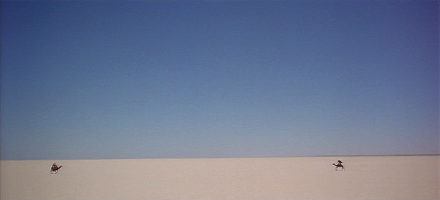Apologies for not writing in a while – I’ve been caught up with the dull necessity of A-level revision and coursework which has prevented me from writing any reviews. After my mock exams, however, I made an effort to see as many Oscar-nominated films as I could within the space of two weeks, and this was one of them.
Review – Lincoln
2013, 150 mins, 12A, Dir. Steven Spielberg, starring Daniel Day-Lewis, Sally Field, David Straitharn, Tommy Lee Jones and Joseph Gordon-Levitt.

Steven Spielberg, still a great giant of the American film industry, has decided to make his twenty-seventh film about Abraham Lincoln, a great giant of American politics. This is certainly no easy task. Lincoln remains a man of mythic proportions, a great advocate of freedom, the leader of the north in a brutal civil war, a victim of assassination at 56. So many have opinions on his life, his character and his motives – indeed, over fifteen thousand books have been written about him. Rather than arguing for one side, however, Spielberg with this film presents an exceptionally balanced portrait of Old Abe at a very specific moment in time: as he tries to pass the thirteenth amendment to abolish slavery.
The film opens with a brutal scene of battle between Confederate (South) and Union (North) soldiers on a grimy field. It almost feels like we’re reliving Saving Private Ryan in a different period, but the sequence ends as quickly as it started, and in terms of onscreen display of Civil War combat this is all we get. The brilliantly written scene that follows shows Lincoln talking to a couple of black Union soldiers about their position in the army, and it is from this point that the politics take over. The main focus of the story is on the President’s attempts to emancipate American slaves, and much of it takes place in tense Cabinet rooms, the boisterous House of Representatives and Lincoln’s own bedroom as the Civil War rages on. It is, as some reviewers have aptly pointed out, like The West Wing in the 1860s, a snapshot of the political persuasion and persistence needed to push a bill through Congress, as uncertain Democrats are targeted by lobbyists working for David Straitharn’s Secretary of State. Despite the lack of spectacle and action, perhaps a little unconventional in terms of Spielberg, in terms of its script it is funny (particularly the insult-trading in Congress), intriguing, very clever, and crucially never dull.
But the film is also a meditation on Abe Lincoln’s character. Despite his ubiquitous presence in patriotic American hearts the film certainly doesn’t skirt over his faults. He has domestic problems with his wife and elder son Robert (Gordon-Levitt), particularly in relation to the latter’s keenness to get away to fight in the war, and there remains the consistently posed question of whether his own motives for the bill were humanitarian or geared more towards ending the north-south conflict. It is not necessarily suggested that he favours complete equality, as does Thaddeus Stevens, a member of Congress played by Tommy Lee Jones, who gives a fantastically deadpan performance. But the overriding impression of Lincoln is that he was indeed one of the few Presidents that could easily be described as great, and that he did make tremendous achievements before his untimely death.
Speaking of the man with the top hat, Daniel Day-Lewis, under impressive but uninhibiting prosthetics, gives a performance truly worthy of a third Oscar. He is incredibly distinctive in that he plays Lincoln with a high-pitched accent, which ties up with contemporary records of his style of speaking, but in doing so loses none of his onscreen presence. In front of his Cabinet, he attacks the very idea of ‘putrescent’ slavery with domineering power, but there are also moments of warmth, particularly in the stories he tells in different situations, laced with wit and often hilarious to watch. Day-Lewis in his typical method style simply was Lincoln for the few months that it took to shoot. Even Spielberg referred to him on set as ‘Mr. President’, a fact revealing of the actor’s sheer might and dedication to his craft.

The focus on intense drama and politics still cannot take away from the fact this is visually a Spielberg film, and as such there are several moments that are breathtaking to look at – Lincoln’s final exit is one such example. Once again shot by frequent collaborator Janusz Kaminski, the camera smartly remains on the ground with its characters – unlike The West Wing, there are no sweeping helicopter shots of the White House – putting a sharp emphasis on character. Spielberg does make a conscious effort to avoid the sentimentality that he has sometimes been criticised for, and any soft moments in the film are few and far between, and quite forgiveable. It is mature Spielberg, and all the better for it. We gain the sense that we are really watching history, and the scene in Congress when the vote is cast on amendment 13 is both tense and exciting, even if you know the outcome.
Lincoln may have been overshadowed by Ben Affleck’s Argo at the BAFTAs and Golden Globes but really it is the superior film – a real credit to the filmmakers involved as well as the cast, particularly Daniel Day-Lewis. But it also stands not just as a technical achievement but as a very well-judged and fair-minded portrayal of the sixteenth President of the United States. Spielberg was so serious about his Lincoln film that he recorded the man’s actual watch in the museum in which it is held and placed the recordings in the completed film – a final reminder of his attention to detail and undeniable skill at directing.
9/10








